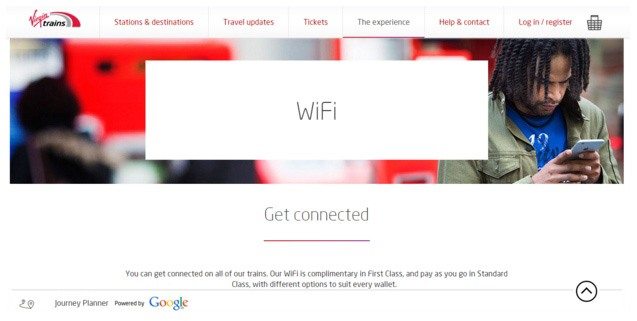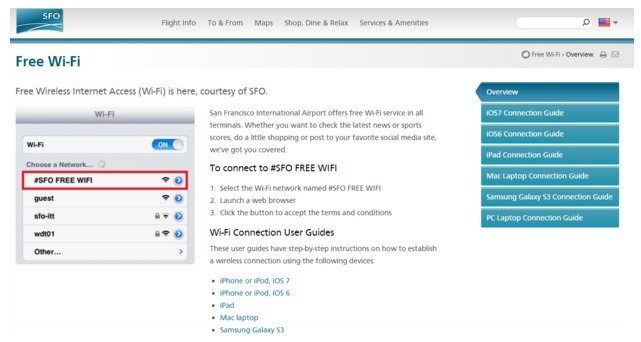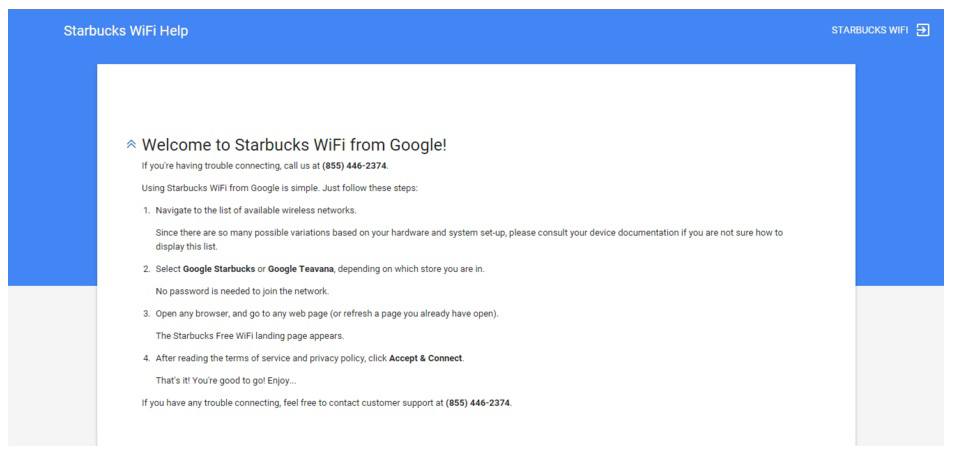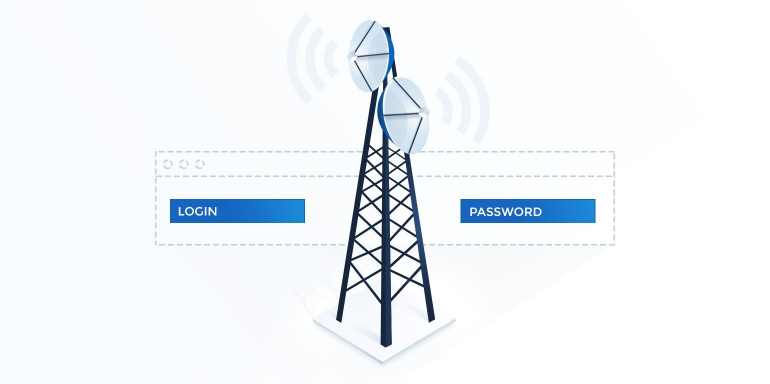After reading a Huffington Post Tech claim that 75% of people say one week without wifi would leave them grumpier than one week without coffee, your response is:
a. Obviously, wifi makes the world go ‘round
b. OMG, I couldn’t go a day without coffee let alone a week. Are these people insane?
c. Is wifi that new Nintendo Wii game?
Picked the first one? Congratulations, you’re part of a growing global trend.
This post will discuss the 5 W’s of wifi and wifi post-click landing pages:
- What is wifi?
- Who is using it and where?
- When to use wifi post-click landing pages
- Why they’re a good idea
- How to build wifi post-click landing pages that connect users to your business, not just your hot spot
Whether you’re sipping a Venti Caramel Macchiato at the corner coffee shop (and picked “b” above) or killing time on a long flight, if you’re on the Internet, chances are you’re using wifi. If you had to log in as a guest and agree to Terms & Conditions before you could connect, you were on a wi-fi post-click landing page.
(It should be noted, the examples in this post are not true post-click landing pages because many of them include navigation links and there are no forms on the pages. However, they are all dedicated to wifi Internet service and are the respective pages a visitor would access when attempting to connect to each location’s wifi network.)
What is wifi?
Wifi is a wireless network that uses radio frequency to provide Internet connection to phones, computers, printers, gaming devices, cameras, and home entertainment systems (Wi-Fi.org).
Click here to learn more about wifi and how it works, such as this interesting factoid: wifi is similar to the frequency found in your microwave. Old or faulty microwaves can interfere with wifi, so make popcorn before you stream Netflix.
Who is using wifi & where?
Internet users connect to wifi at home, work, coffee shops, hotels, airports — everywhere.
- One-quarter of global households had wifi in 2014 — over 450 million households worldwide
- China leads the world with 108 million, followed by the United States at 72 million, and Japan at 30 million
- 2 billion wifi devices were sold in 2013
- The Wi-Fi Alliance has certified more than 25,000 products for proven interoperability, industry-standard security protections, and the latest technology
The global wifi network is growing, along with consumer expectations. Travelers want Internet access wherever they go.
- Public transit systems like Virgin Trains are adding wifi to their services:

- The Metropolitan Atlanta Rapid Transit Authority (MARTA) offers free wi-fi on its trains and buses and is partnering with Uber through the MARTA app, attracting millennials
- Nearly 60 airlines worldwide offer in-flight wifi
- 9 of the 10 busiest airports in the United States offer complimentary Internet, including San Francisco International Airport (SFO):

- 94% of people cite wifi as the most important hotel amenity, and 38% of those say no wifi is a deal-breaker and will book elsewhere
Marriott prominently highlights their free wifi with this page — and a clever play on words, since wi-fi does not require plugs. Well done, Marriott!

What is a wifi post-click landing page?
Wifi post-click landing pages provide wifi access to a company’s target audiences, generally requiring users to log in. These captive portal systems operate by routing all web traffic to the wifi post-click landing page until the customer clicks through, giving the network owner a visitor’s undivided attention.
Wifi post-click landing pages often include:
- Basic information about the company
- Ads from partners
- Upgrade opportunities for faster wifi
- Disclaimer about the use of Internet
Here is an example of a wifi upgrade offer from Marriott:

When should businesses use a wifi post-click landing page?
Short answer: If you offer wifi, use a wifi post-click landing page. Click here to learn how to create your custom wifi post-click landing page.
Why?
Reason #1: Wifi post-click landing pages are an opportunity to start a conversation
Wifi post-click landing pages are a great way to showcase your business and collect personal identification information like name and email for future communications.
Many wifi post-click landing pages redirect users to the company’s homepage upon logging in. Why not keep their attention longer with another post-click landing page? Appeal to wifi users with social media:
- CTA buttons for quick “likes” or “follows”
- Links to review sites like TripAdvisor or Yelp
- Instagram photo sharing
- Invitation to sign up for newsletters, alerts
Reason #2: Wifi post-click landing pages offer a higher level of control and security
A captive portal allows wifi network owners to require users to accept terms of service. Most router firmware can deploy bandwidth restrictions and data caps on a per user basis while preventing devices like XBox from getting online and eating up bandwidth.
Here’s an example of McDonald’s wifi terms and conditions, what you can expect to see after you connect to their wifi network:

How to build a wifi post-click landing page
An important consideration when building wifi post-click landing pages — as well as post-click landing pages that function properly on wifi — is load time. Check out this chart of the fastest public wifi speeds worldwide:

Notice who didn’t make the list? The United States is lagging behind the rest of the world in wifi technology. Wifi is a faster connection than cellular data, but speed varies widely both abroad and nationally.
A recent report on McDonald’s wifi network by public wifi watchdog Rotten wifi shows a range of speed from a sluggish 0.10 Mbps in New Jersey to a speedy 3.92 Mbps in Vermont.
Check your wifi speed with the Rotten wifi app and see how you rate.
This iTunes chart gives you an idea of the average download sizes and time required to complete:

Heavy images, videos, and other large files can slow the load time and drive away visitors. Click here for tips on designing mobile-optimized post-click landing pages that will also function well on wifi.
Slow wifi post-click landing page is better than NO wifi post-click landing page
Check out Greyhound’s wifi-tagged website URL, Greyhoundwifi.com:

Clicking the “Surf” button should take you to a wifi post-click landing page, but instead you land at Google. This is a huge missed opportunity for Greyhound and being able to connect with its customers.
Then, there is Starbucks, which demonstrates how to use a customer service phone number on its wifi post-click landing page to assist users connecting to its wifi network. No doubt this level of support can help create customer loyalty:

While their portal doesn’t require a password or login information, visitors are kept engaged through a proprietary digital network. Starbucks offers wifi users exclusive content like movie trailers and special offers, enhancing the customer experience while increasing sales opportunities.
The Starbucks Digital Network keeps visitors viewing Starbucks content even though they’ve gained wifi access:

From retail to transportation, businesses are embracing the power of wifi to attract customers who stay longer, spend more, and come again. Instapage can help you build a wifi post-click landing page that integrates services you likely already use; including CRM tools, analytics, marketing automation, and more.
For more information on the different types of post-click landing pages, sign up for an Instapage Enterprise demo today.

See the Instapage Enterprise Plan in Action.
Demo includes AdMap™, Personalization, AMP,
Global Blocks, heatmaps & more.
